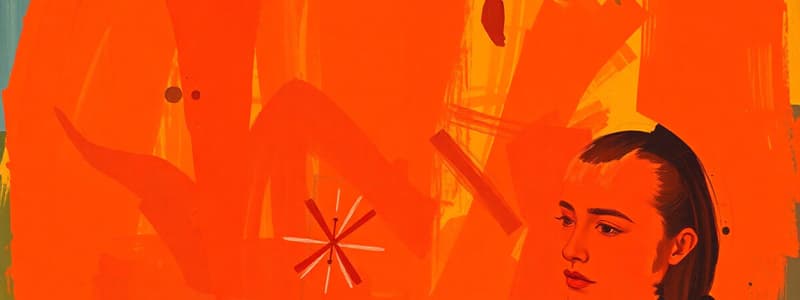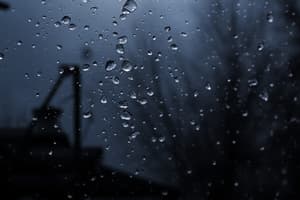Podcast
Questions and Answers
Which printing process uses light-sensitive paper and employs a blue pigment?
Which printing process uses light-sensitive paper and employs a blue pigment?
- Photogravure
- Platino print
- Salt print
- Cyanotype (correct)
What mechanism does the Camera obscura utilize to project images?
What mechanism does the Camera obscura utilize to project images?
- Concave mirrors
- Reflective lens
- Aperture and light (correct)
- Image stabilization
Which technique involves creating a latent image that requires development to be visible?
Which technique involves creating a latent image that requires development to be visible?
- Gum printing
- Instantaneous photography
- Autochrome
- Daguerreotype (correct)
What is the primary feature of Pictorialism in photography?
What is the primary feature of Pictorialism in photography?
Which photographic method involves using a glass plate coated with a collodion emulsion?
Which photographic method involves using a glass plate coated with a collodion emulsion?
Flashcards
Daguerreotype
Daguerreotype
An early photographic process, where a silver halide emulsion was coated onto a glass plate, creating a positive image. It was popular for portraits in the mid-19th century.
Calotype
Calotype
A photographic process that utilized a paper negative, resulting in a positive print. It was known for its soft, detailed images and was popular in the early days of photography.
Collodion (wet-plate)
Collodion (wet-plate)
A process that uses a light-sensitive emulsion coated on a glass plate to create a negative image. It was a crucial development in photography, allowing for multiple prints from one negative.
Celluloid / Nitrate film
Celluloid / Nitrate film
Signup and view all the flashcards
Albumen paper
Albumen paper
Signup and view all the flashcards
Study Notes
Photographic Processes and Technologies
- Early Photographic Processes: Heliography, Daguerreotype, Calotype, Salt print, Albumen paper, Collodion (wet-plate), Tintype, Ambrotype, Platinum print
- Print Types/Formats: Negative/positive, direct positive, DOP (Developed out print), POP (Printed out print), Cartes de visites, Stereoscopy/stereograph, Sun printing, Cyanotype, Combination printing, Half-tone
- Materials/Components: Gelatin silver print, Baryta, Celluloid/nitrate film, Magnesium flash, Dry plate, Albumen paper, Film
- Equipment: Camera obscura, Camera lucida, Magic lantern, Pantograph, Kodak, Stereograph, Kodachrome
- Styles and Techniques: Pictorialism, Straight photography, Photogravure, Gum printing, Pre-visualisation, Photomechanical reproduction, Instantaneous photography
- Related Concepts/Terms: Latent image, 3-part laminar structure of photographs, Physionotrace, Silhouette
- Color Photography: Autochrome, Kodachrome
Studying That Suits You
Use AI to generate personalized quizzes and flashcards to suit your learning preferences.




